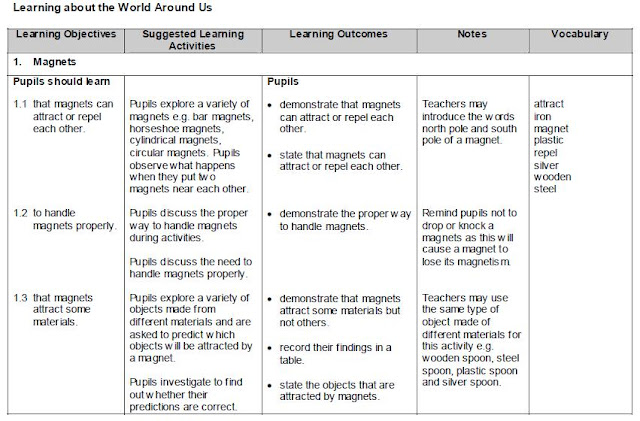Integrated Curriculum for Primary Schools
Curriculum Specifications
SCIENCE
Year 3
Thursday, 8 December 2011
Plants
Plants include familiar types such as trees, herbs, bushes, grasses, vines, ferns, mosses, and green algae. The scientific study of plants, known as botany, has identified about 350,000 extant species of plants. Fungi and non-green algae are not classed as plants.
Most plants grow in the ground, with stems above, and roots below. Water and some nutrients come from the roots. The evaporation of water from pores in the leaves pulls water through the plant. This is called transpiration.
A plant needs sunlight, carbon dioxide, minerals and water to make food. A green substance in plants called chlorophyll traps the energy from the Sun needed to make food. Chlorophyll is mostly found in leaves, inside plastids, which are inside the leaf cells. The leaf can be thought of as a food factory. Leaves of plants vary in shape and size, but they are always the plant organ best suited to capture solar energy. Once the food is made in the leaf, it is transported to the other parts of the plant such as stems and roots.
The word "plant" can also mean to put something in the ground. For example, farmers plant seeds in the ground.
Wednesday, 7 December 2011
Magnet
A magnet is a material or object that produces a magnetic field. This magnetic field is invisible but is responsible for the most notable property of a magnet: a force that pulls on other ferromagnetic materials, such as iron, and attracts or repels other magnets.
Sunday, 27 November 2011
Subscribe to:
Posts (Atom)










